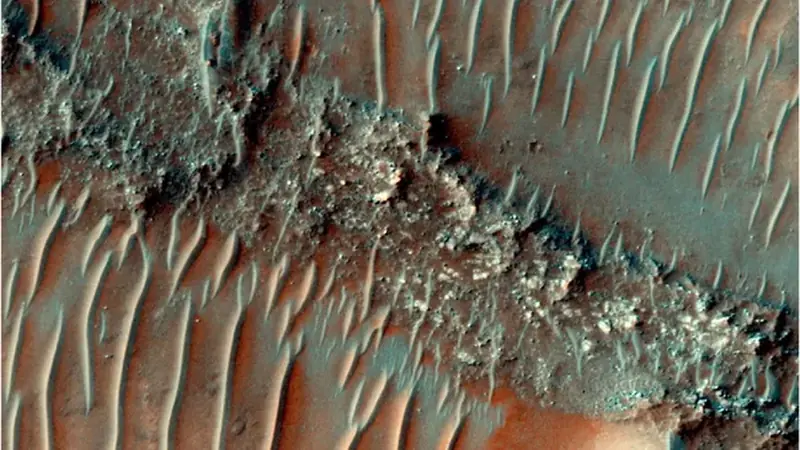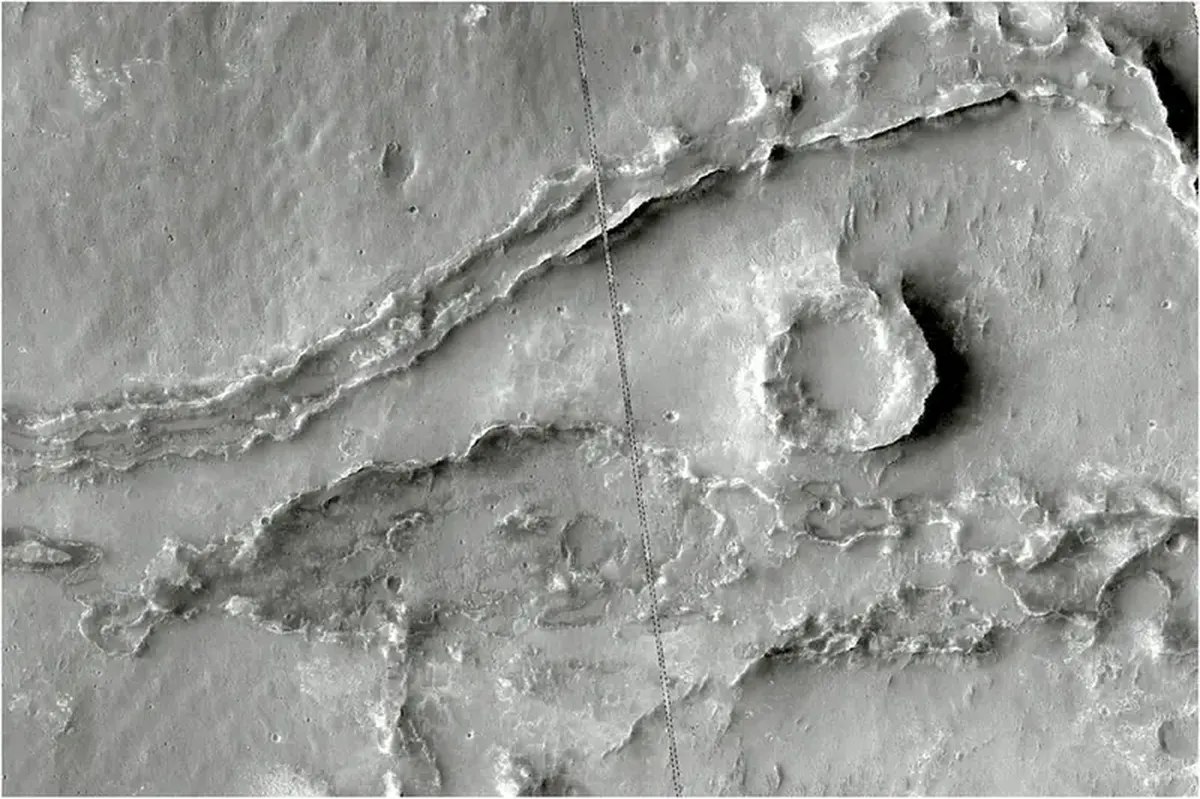
New research from planetary scientists at the Open University in the UK, led by Adam Loskutov, reveals that Mars was a much wetter and rainier place than previously thought. His team studied ancient inverted riverbeds stretching over 15,000 kilometers in the southern region of Noachis Terra (Noah’s Land). “Our work provides new evidence that Mars was once a far more complex and active planet than it is today,” stated the lead researcher.
What Did the Scientists Discover?
When the Mariner 9 orbiter photographed the surface of the Red Planet in the 1970s, revealing networks of dried-up rivers, scientists learned that Mars was a wet planet over 3.5 billion years ago. However, it turns out that these were not the only signs of ancient water on Mars.
As this water drained away or evaporated, it left behind sediment deposits. Sometimes, these can be seen in craters that were once filled with water. Currently, NASA’s Curiosity rover is exploring Gale Crater, where such sedimentary rocks can be observed, according to Live Science.
In other instances, these rocks were deposited along riverbeds. Over time, the deposits hardened while the riverbeds and surrounding land eroded and weathered away. More erosion-resistant deposits formed high ridges. Geologists refer to these as river meandering ridges or, more simply, inverted riverbeds.
To uncover the vast number of such channels in the Noachis Terra region, Loskutov and his colleagues utilized images and data from NASA’s Mars Reconnaissance Orbiter’s High Resolution Imaging Science Experiment (HiRISE) and Context Camera, as well as the laser altimeter from the Mars Global Surveyor mission.
For a long time, scientists overlooked this region of the Red Planet due to the absence of classic riverbeds, which are clear evidence of past water presence. However, while mapping the network of inverted riverbeds, Loskutov’s team discovered numerous signs that there was once a significant amount of water here.

A riverbed left by a dried-up river on Mars billions of years ago
A Time Capsule
“Studying Mars, especially such a little-explored region like Noachis Terra, is truly fascinating because this environment has remained virtually unchanged for billions of years. It is a time capsule that preserves fundamental geological processes in a way that is simply impossible on Earth,” noted Loskutov.
Some of the inverted channels are isolated segments that have been subjected to the elements for billions of years, while others have remained intact, forming towering and elongated systems.
According to Loskutov, the extensive network of inverted channels does not suggest that they were formed by sudden floods. More likely, they developed under stable climatic conditions over a geologically significant period—during the transition from one geological era to another around 3.7 billion years ago.
Interestingly, the most likely source of water capable of forming these channels is precipitation: rain, hail, or snow. Given the size of the network of inverted channels in Noachis Terra, one could infer that this region of Mars experienced many rainy days in a warm and humid climate.
This further supports the idea that Mars was once more Earth-like than the cold, barren desert it is today.
Recently, Loskutov’s team presented their findings at the National Astronomy Meeting of the Royal Astronomical Society at Durham University (UK).
